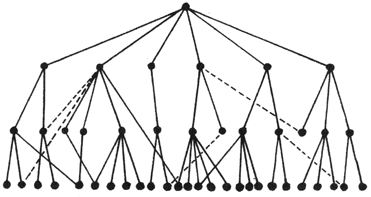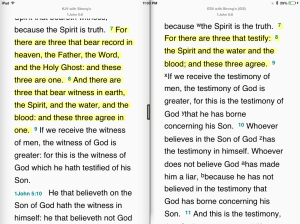What is Textual Criticism and Why It Matters
Imagine if I wrote a 15 page letter and gave it to you to copy by hand. Let’s say you, in turn, gave it to two other people and they copied. Say each of them gave it to several people and they copied it. Say this continued for 1000 years, and my original, as well as the almost all of the copies up to 200 years were lost. What would you have? What you would have is something similar to what we have with the New Testament. This is what makes textual criticism necessary.
Textual Criticism is not a term most Christians are familiar with. Yet, without it we would not have Christianity. Yes, it is that important. So, in the next several posts I am going to try to introduce this important topic and then give some examples as to how the actual work is done. We’ll start with some definitions:
- Autograph
- Manuscript
- Textual Variant
- Textual Apparatus
- Nestle-Aland Greek New Testament
- Textual Criticism
These should get us started for now. With each post we’ll add a few more definitions as we delve deeper into the discussion.
Autograph
So for example, the autograph of 1 Corinthians would be the copy that Paul actually wrote (or dictated). We have no autographs from any ancient literary document. They remain either undiscovered or they no longer exist.
Manuscript
The New Testament is the most well attested ancient document by far when it comes to the number of ancient manuscripts we have available
to examine. We have around 5,500 Greek manuscripts alone, and when you add in ancient translations into Latin, Syriac, Coptic, Armenian, etc. the number rises to at least 20,000. Of these manuscripts we have around 124 which were copied within 300 years of the original, a dozen
- P52 The oldest NT manuscript we possess
of these being from the second century. If you compare this to any other classical writing, what you’ll find is that no other ancient copy of any literary text exists within 300 years of the original. Not one. And the manuscripts we do have containing copies of
those writings total to about 20 on average, often less. In other words, we can be infinitely more confident that we can trace the NT text back to the original than any other work of antiquity.
| Document | Date of Originals | Earliest MSS | Number of MSS |
| New Testament | 5-100 AD | 65-150 AD | 5600+; thousands of quotes from Fathers; 8000 versions |
| Illiad | ca. 800 BC | ca 400 BC | 643 |
| Plato (Collected Works | ca. 400 BC | ca. 900 AD | 7 |
| Tacitus | ca. 100 AD | 1100 AD | 20 |
| Euripides | 480-406 BC | 1100 AD | 330 |
Textual Variant
Perhaps the best way to illustrate this is to point you to is to show you:
In the KJV you find the words
“For there are three that bear record in heaven, the Father, the Word, and the Holy Ghost: and these three are one…”
However, the most other modern translation, the portion of the text is omitted. Why? This has to do with textual criticism, and we’ll look more closely at this particular text in a future post.
Textual Apparatus
Nestle-Aland Greek New Testament
Textual Criticism
So with some basic definitions, in further posts we’ll continue to discuss what TC actually looks like and why it is vital to how we read the Bible.
1. [Dan Wallace defines a textual variant as: “any place among the manuscripts in which there is variation in wording, including word order, omission or addition of words, even spelling differences…”; Stewart, Robert B., ed. the Textual Reliability of the New Testament: Bart D. Erhman and Daniel B. Wallace in Dialogue, (Minneapolis: Fortress Press, 2011), 32.]↩











